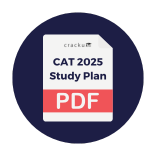Five jumbled up sentences (labelled 1, 2, 3, 4 and 5), related to a topic, are given below. Four of them can be put together to form a coherent paragraph. Identify the odd sentence and key in the number of that sentence as your answer.
1. In English, there is no systematic rule for the naming of numbers; after ten, we have "eleven" and "twelve" and then the teens: "thirteen", "fourteen", "fifteen" and so on.
2. Even more confusingly, some English words invert the numbers they refer to: the word "fourteen" puts the four first, even though it appears last.
3. It can take children a while to learn all these words, and understand that "fourteen" is different from "forty".
4. For multiples of 10, English speakers switch to a different pattern: "twenty", "thirty", "forty" and so on.
5. If you didn't know the word for "eleven", you would be unable to just guess it - you might come up with something like "one-teen".
Correct Answer: 3
Sentence 3 is the odd one out because it introduces a different topic compared to the other sentences. While the other sentences focus on the naming patterns of numbers in English, especially the irregularities and variations in the system, sentence 3 shifts the focus to the learning process of children and their understanding of the differences between numbers like "fourteen" and "forty." The other sentences contribute to the discussion about the intricacies of English number naming, making sentence 3 less aligned with the central theme of the paragraph.
Video Solution

Create a FREE account and get:
- All Quant CAT complete Formulas and shortcuts PDF
- 38+ CAT previous year papers with video solutions PDF
- 5000+ Topic-wise Previous year CAT Solved Questions for Free




